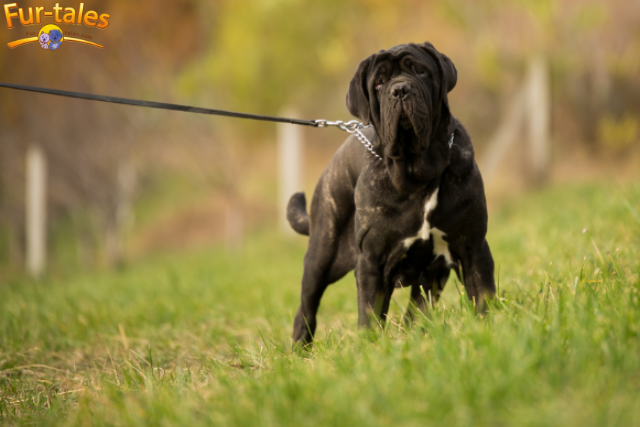
Which Dogs Live the Shortest? 10 Breeds to Know
Choosing a dog is one of life’s most joyful decisions, but it’s also one that comes with emotional responsibility. Among the many factors to consider when selecting a breed—such as size, temperament, activity level, and grooming needs—lifespan is an important yet often overlooked element. While we all wish our dogs could stay with us forever, the reality is that some breeds naturally live shorter lives than others.
This article dives into 10 dog breeds with the shortest average lifespans, explains why some breeds live less than others, and compares their health characteristics. By understanding the trade-offs, you can make informed decisions, provide proactive care, and truly cherish every moment with your furry friend.
Why Do Some Dogs Live Shorter Lives?
Just like in humans, canine lifespan is influenced by a mix of genetics, size, health conditions, and lifestyle. Larger breeds tend to age faster and succumb earlier to age-related conditions, while smaller dogs typically live longer.
Key reasons why some breeds have shorter lifespans include:
- Rapid growth rate in large and giant breeds
- Genetic predisposition to specific diseases (like cancer or cardiomyopathy)
- Overbreeding, which can reduce genetic diversity and health resilience
- Stress on organs and joints due to size and weight
Let’s explore which dogs tend to live shorter lives and what makes each unique.
Top 10 Dog Breeds with the Shortest Lifespans
1. Great Dane
Average lifespan: 7 to 10 years
Known as the “gentle giant,” the Great Dane is affectionate, loyal, and majestic. However, their large size contributes to a shorter lifespan. Common health issues include dilated cardiomyopathy, hip dysplasia, and bloat—a life-threatening condition where the stomach twists.
Health Tips:
- Avoid overfeeding
- Use elevated food bowls to reduce bloat risk
- Monitor for signs of heart disease
2. Bernese Mountain Dog
Average lifespan: 6 to 8 years
This large, fluffy breed is beloved for its gentle nature and devotion to family. Sadly, the Bernese has one of the shortest lifespans due to a high incidence of cancer, particularly malignant histiocytosis.
Health Tips:
- Schedule regular wellness checks
- Choose breeders who test for cancer-prone lines
- Support immune health with proper nutrition
3. Irish Wolfhound
Average lifespan: 6 to 8 years
As the tallest of all dog breeds, the Irish Wolfhound has a noble appearance and a sweet demeanor. Their large size contributes to their short lifespan, with heart disease (especially dilated cardiomyopathy) being a common cause of death.
Health Tips:
- Heart monitoring as they age
- Provide joint supplements early on
- Avoid intense exercise after meals
4. Neapolitan Mastiff
Average lifespan: 7 to 9 years
Massive and wrinkled, the Neapolitan Mastiff is protective and loving but has a host of health risks due to its size and conformation, including arthritis, heart problems, and bloat.
Health Tips:
- Regular joint checks
- Weight management is crucial
- Watch for skin infections in folds
5. Newfoundland
Average lifespan: 8 to 10 years
Affectionately called “gentle giants,” Newfoundlands are wonderful family dogs but are susceptible to hip dysplasia, heart disease, and cancer.
Health Tips:
- Focus on weight control
- Maintain strong dental hygiene to support heart health
- Encourage swimming for joint-friendly exercise
6. Saint Bernard
Average lifespan: 8 to 10 years
Saint Bernards are known for their heroism in mountain rescues and their loving personalities. Like other giant breeds, they are prone to osteosarcoma (bone cancer), heart disease, and joint problems.
Health Tips:
- Avoid rough play on hard surfaces
- Early spay/neuter may help reduce cancer risk
- Use supportive bedding
7. Bulldog (English Bulldog)
Average lifespan: 8 to 10 years
This breed’s iconic face comes with challenges. Bulldogs suffer from brachycephalic syndrome, which affects breathing, as well as skin infections, hip dysplasia, and heart issues.
Health Tips:
- Avoid excessive heat
- Maintain a lean body weight
- Clean skin folds daily
8. Bullmastiff
Average lifespan: 7 to 9 years
Protective and gentle, Bullmastiffs are susceptible to cancer, hip and elbow dysplasia, and bloat. Their powerful build can also put stress on their joints over time.
Health Tips:
- Annual orthopedic checks
- Feed smaller meals multiple times a day
- Start joint supplements early
9. Rottweiler
Average lifespan: 8 to 10 years
Rottweilers are confident, intelligent dogs but have a relatively short lifespan due to high rates of bone cancer, heart problems, and joint issues.
Health Tips:
- Early screening for cardiac health
- Prioritize socialization and mental engagement
- Limit rapid weight gain during puppyhood
10. French Mastiff (Dogue de Bordeaux)
Average lifespan: 5 to 8 years
One of the shortest-living breeds, the French Mastiff is prone to a wide range of health issues including heart disease, bloat, and joint degeneration.
Health Tips:
- Use a slow feeder to reduce bloat risk
- Routine cardiac exams
- Low-impact exercise and joint protection
Comparison Summary Table
| Breed | Average Lifespan | Main Health Concerns | Size Category |
|---|---|---|---|
| Great Dane | 7–10 years | Bloat, heart disease, hip dysplasia | Giant |
| Bernese Mountain Dog | 6–8 years | Cancer, joint issues | Large |
| Irish Wolfhound | 6–8 years | Heart disease, bone issues | Giant |
| Neapolitan Mastiff | 7–9 years | Joint issues, heart, skin folds | Giant |
| Newfoundland | 8–10 years | Heart disease, cancer, hip dysplasia | Giant |
| Saint Bernard | 8–10 years | Bone cancer, joint stress | Giant |
| English Bulldog | 8–10 years | Breathing, heart issues, joint problems | Medium-Large |
| Bullmastiff | 7–9 years | Joint issues, cancer, bloat | Large |
| Rottweiler | 8–10 years | Bone cancer, heart issues | Large |
| French Mastiff | 5–8 years | Heart disease, joint problems, bloat | Giant |
How to Extend Your Dog’s Lifespan (Regardless of Breed)
While some breeds may be genetically predisposed to shorter lives, responsible ownership and proactive care can make a huge difference. Here’s how to help your dog live a longer, healthier life:
- Balanced nutrition: Feed high-quality, breed-appropriate food
- Weight control: Obesity shortens a dog’s life significantly
- Regular vet checkups: Early detection of illness is crucial
- Daily exercise: Adjust to your dog’s age and ability
- Dental care: Brush your dog’s teeth or provide dental chews
- Mental stimulation: Prevent cognitive decline through enrichment
- Preventative care: Stay on top of vaccinations, flea/tick meds, and heartworm prevention
FAQs: Shortest-Lived Dog Breeds
Q: Are large dogs always shorter-lived than small dogs?
A: Generally, yes. Larger breeds tend to age faster and develop age-related diseases earlier. However, lifestyle and genetics also play significant roles.
Q: Which breed has the absolute shortest lifespan?
A: While it varies, the French Mastiff (Dogue de Bordeaux) is often cited as having the shortest lifespan—around 5 to 8 years.
Q: Can I help a short-lived breed live longer?
A: Yes! A healthy diet, weight management, regular vet care, and mental stimulation can all extend your dog’s life.
Q: Are mixed breeds longer-lived than purebreds?
A: Mixed breeds often have fewer inherited diseases and can live longer, but this isn’t guaranteed. It depends on the individual dog.
Q: What is the longest-living dog breed for comparison?
A: Small breeds like the Chihuahua, Toy Poodle, and Dachshund often live 14–18 years or more with good care.
Conclusion: Life Is Short—Make It Sweet
While some breeds may have shorter lifespans, the love, companionship, and joy they bring can fill a lifetime with memories. Knowing a breed’s typical lifespan can help you prepare emotionally, provide proactive care, and embrace every day with gratitude.
Whether you choose a Great Dane with a regal presence or a Rottweiler with unwavering loyalty, what matters most is how you share your time together. Because in the end, it’s not about the years in the life—it’s about the life in those years.
Image Designed Using Canva
